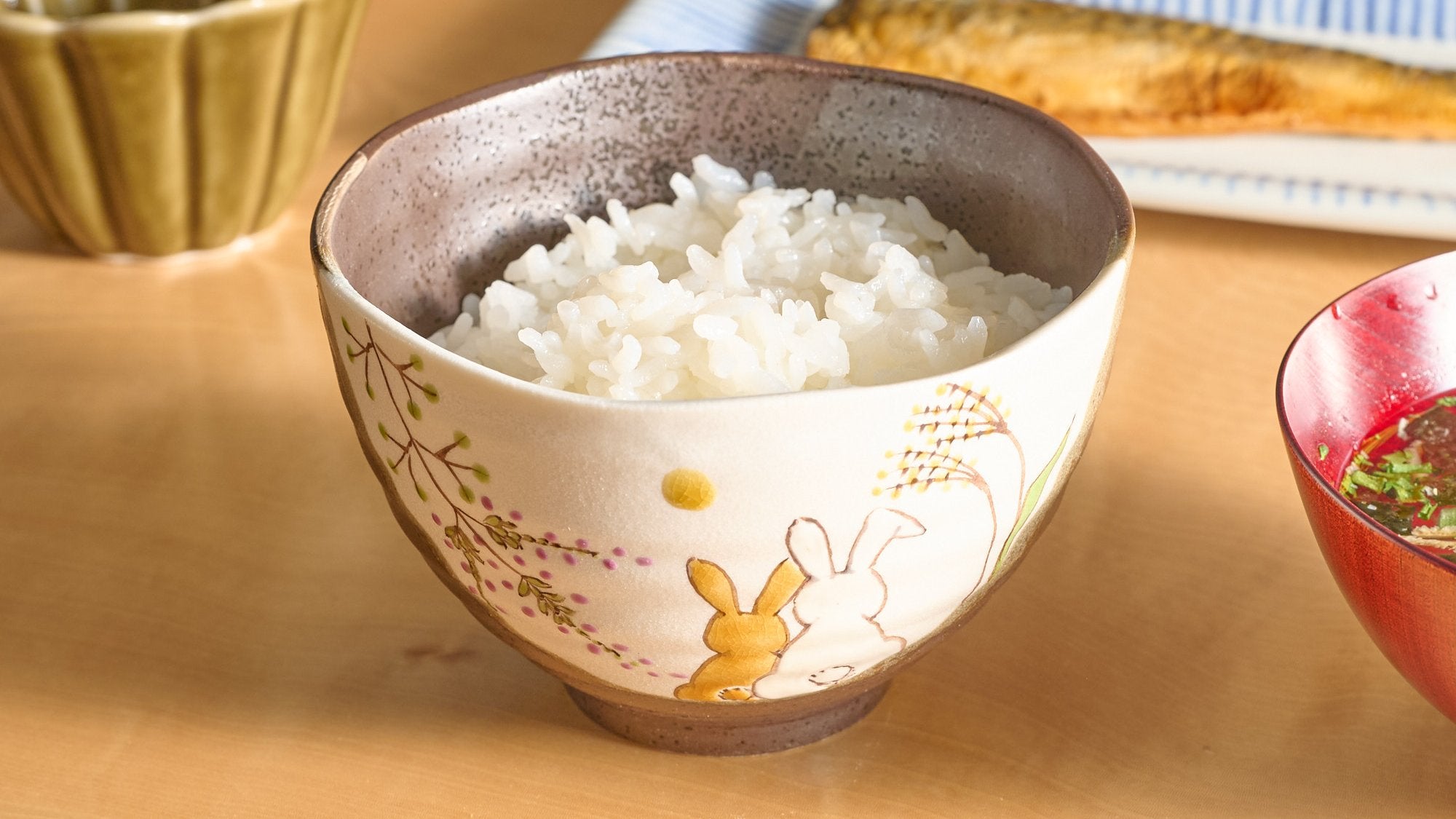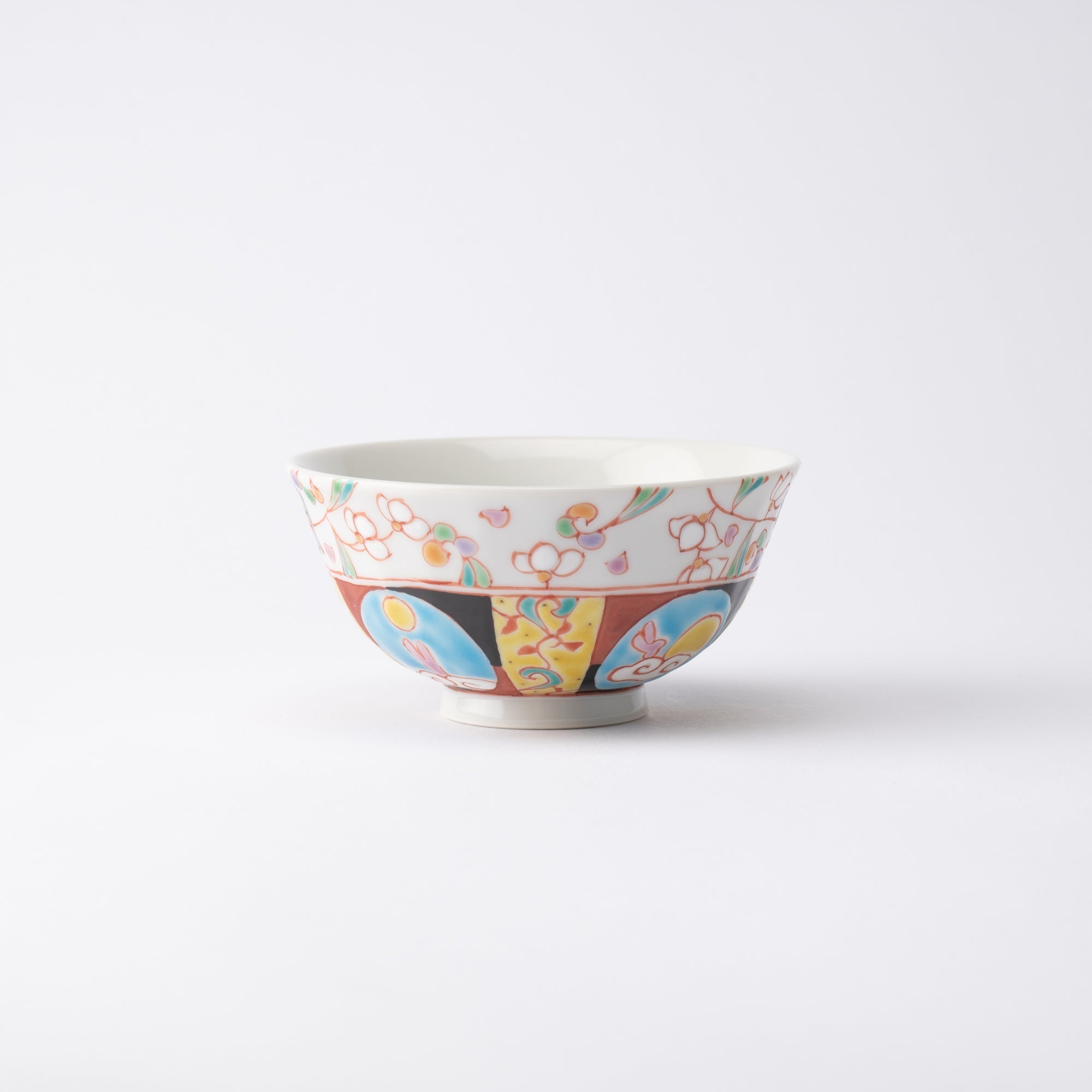
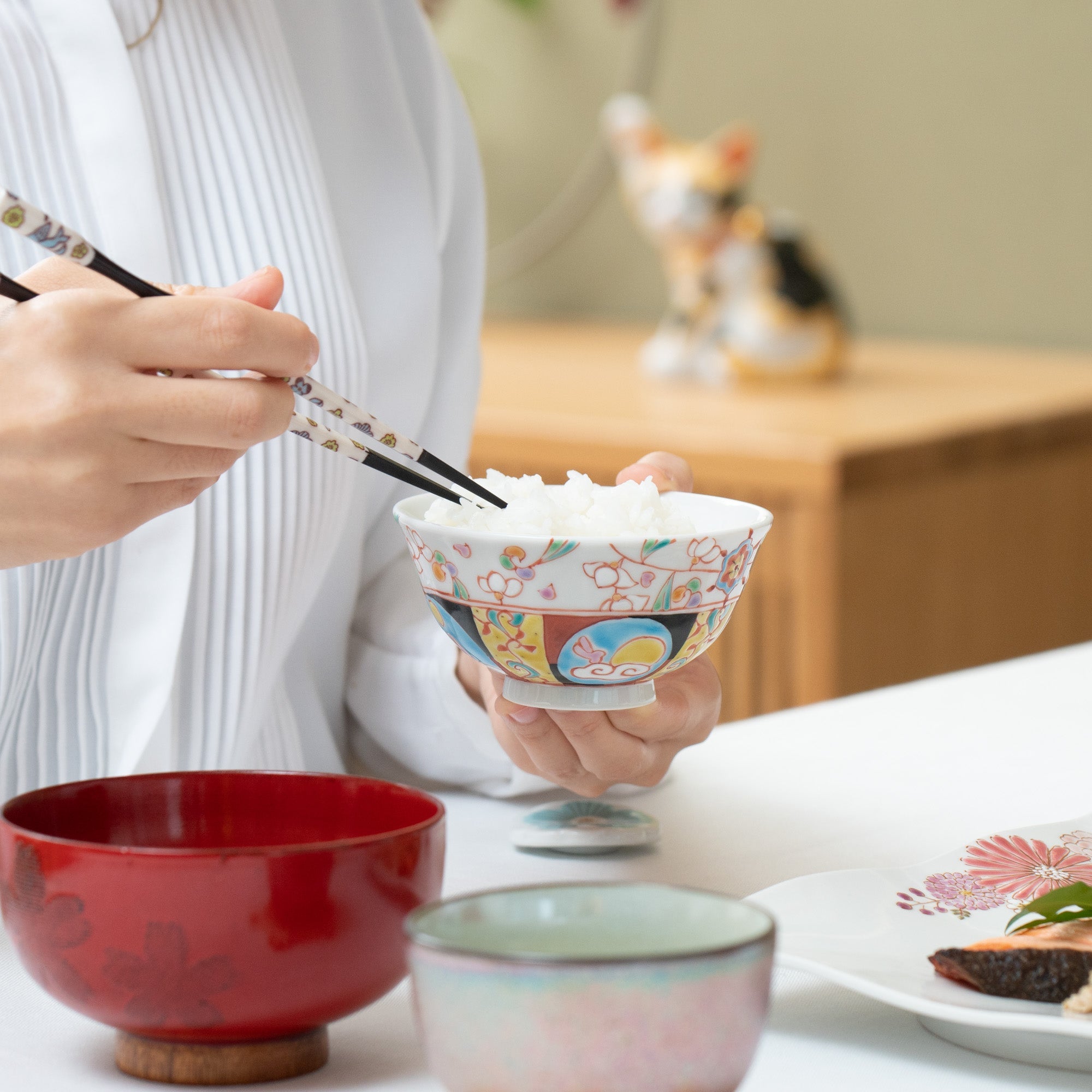
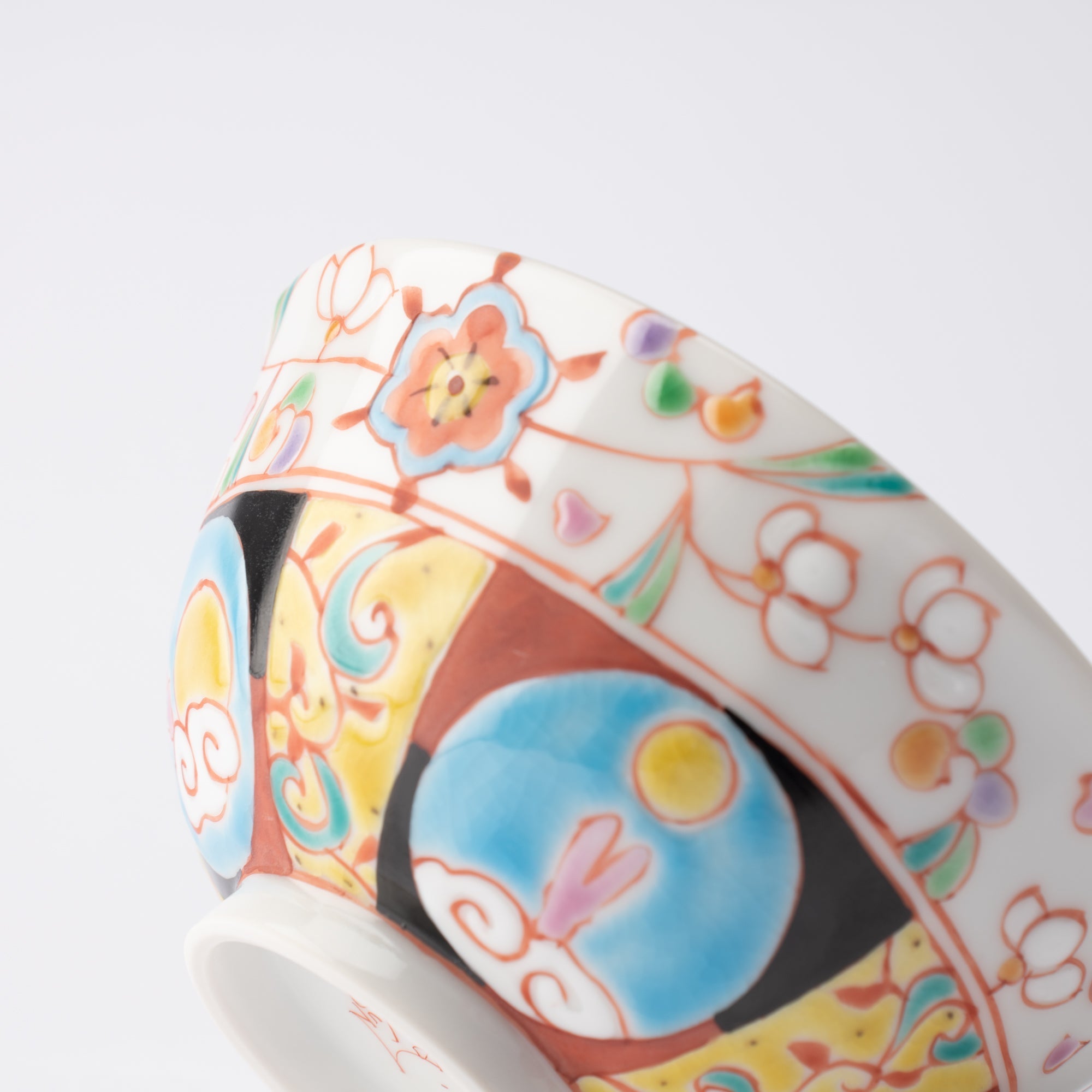
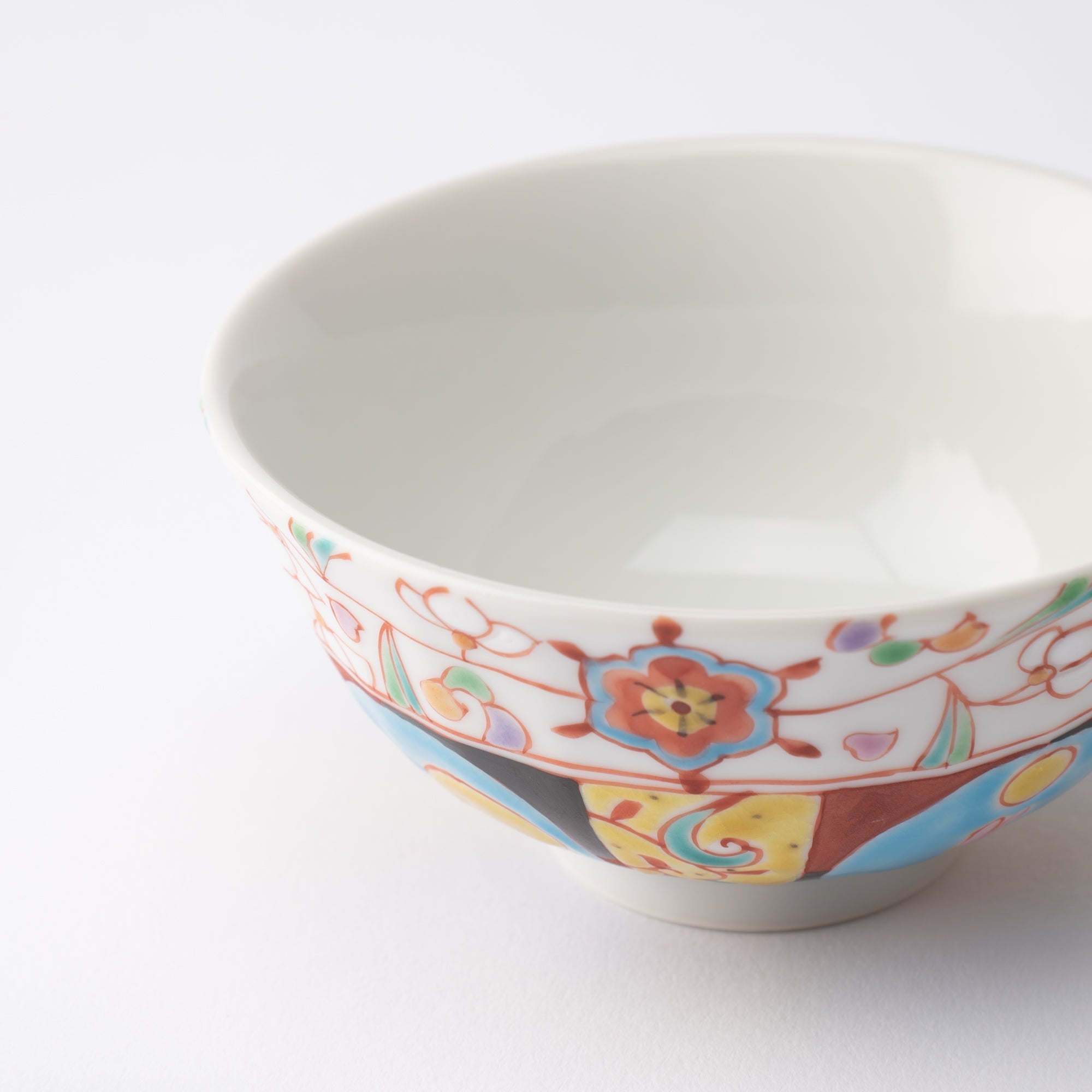
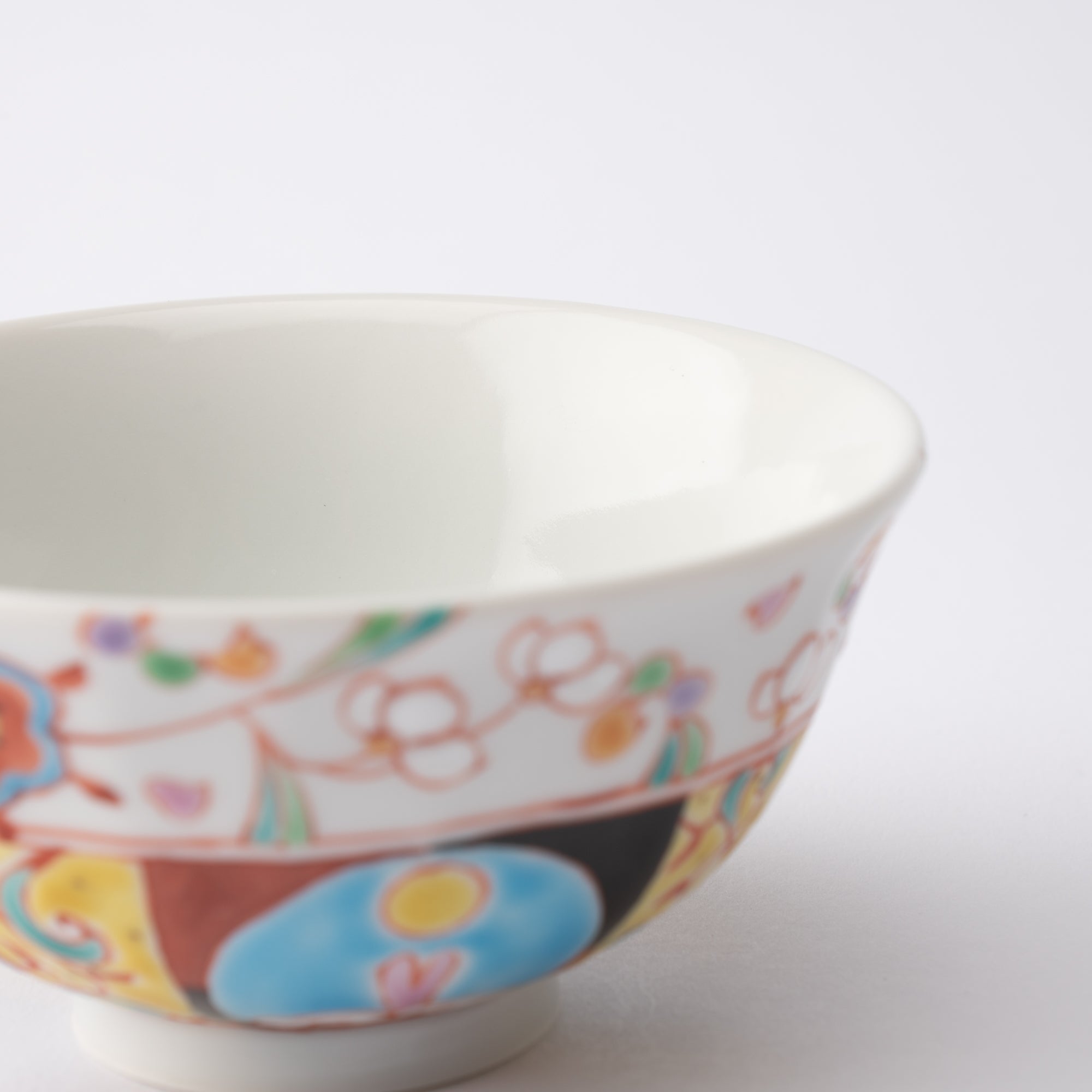
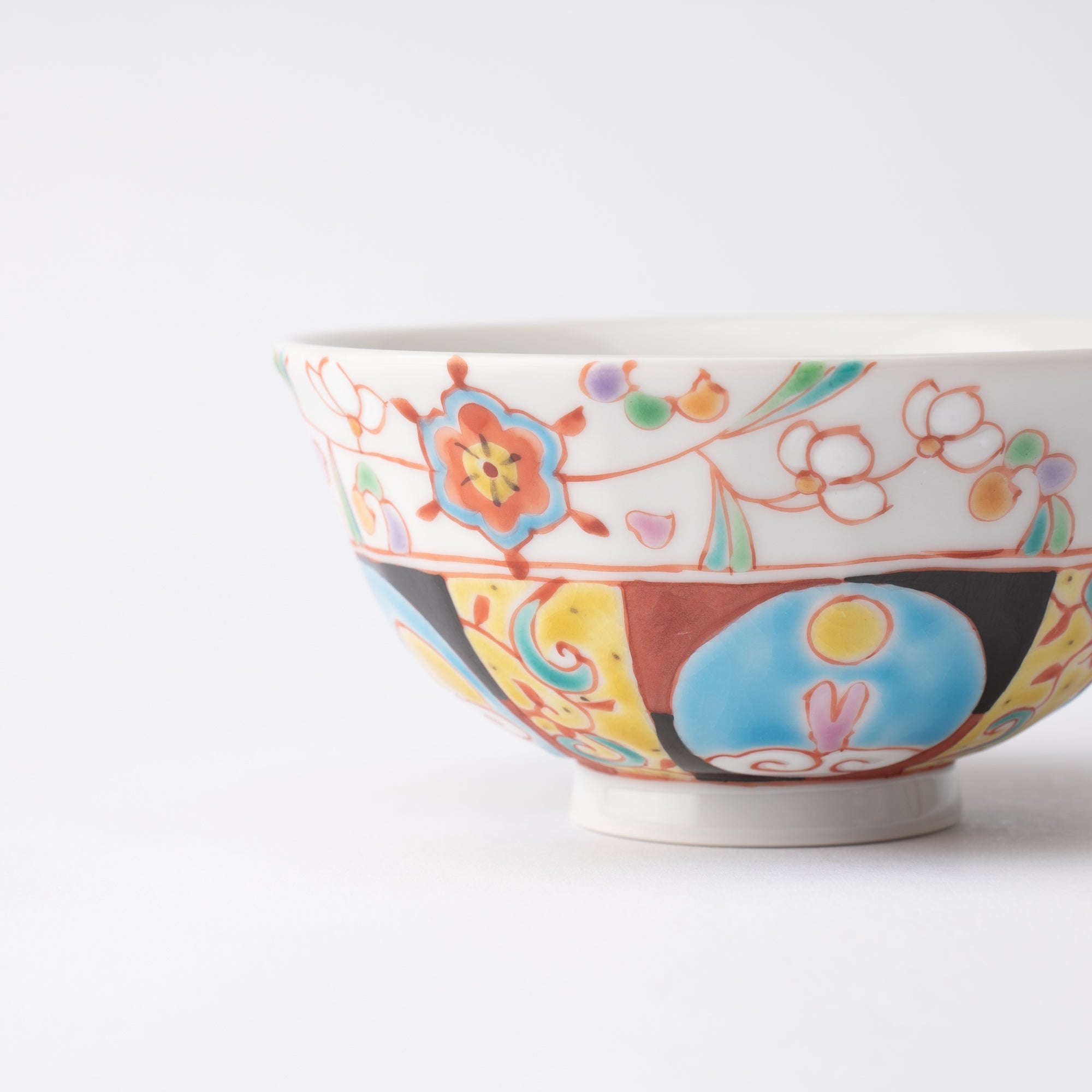
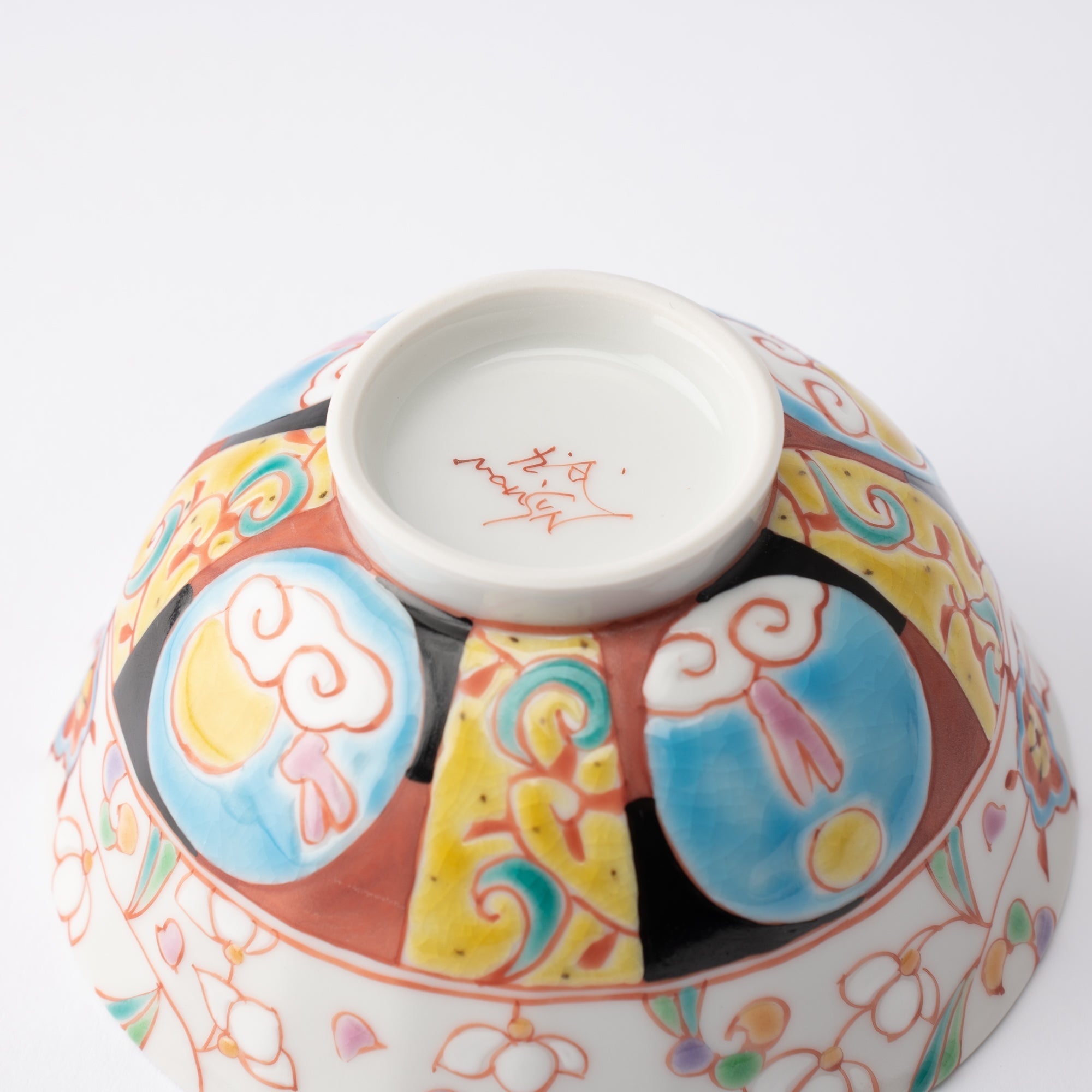
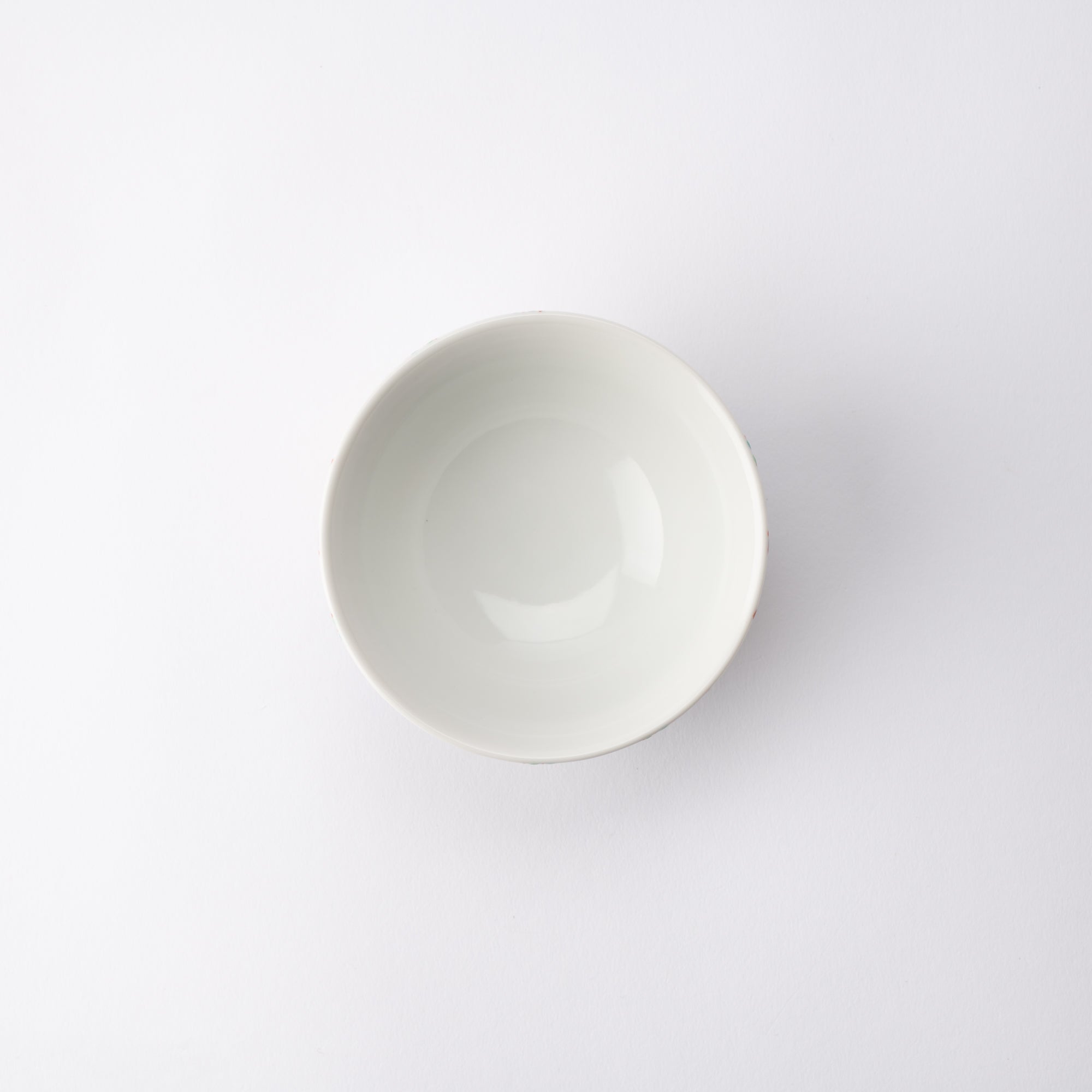
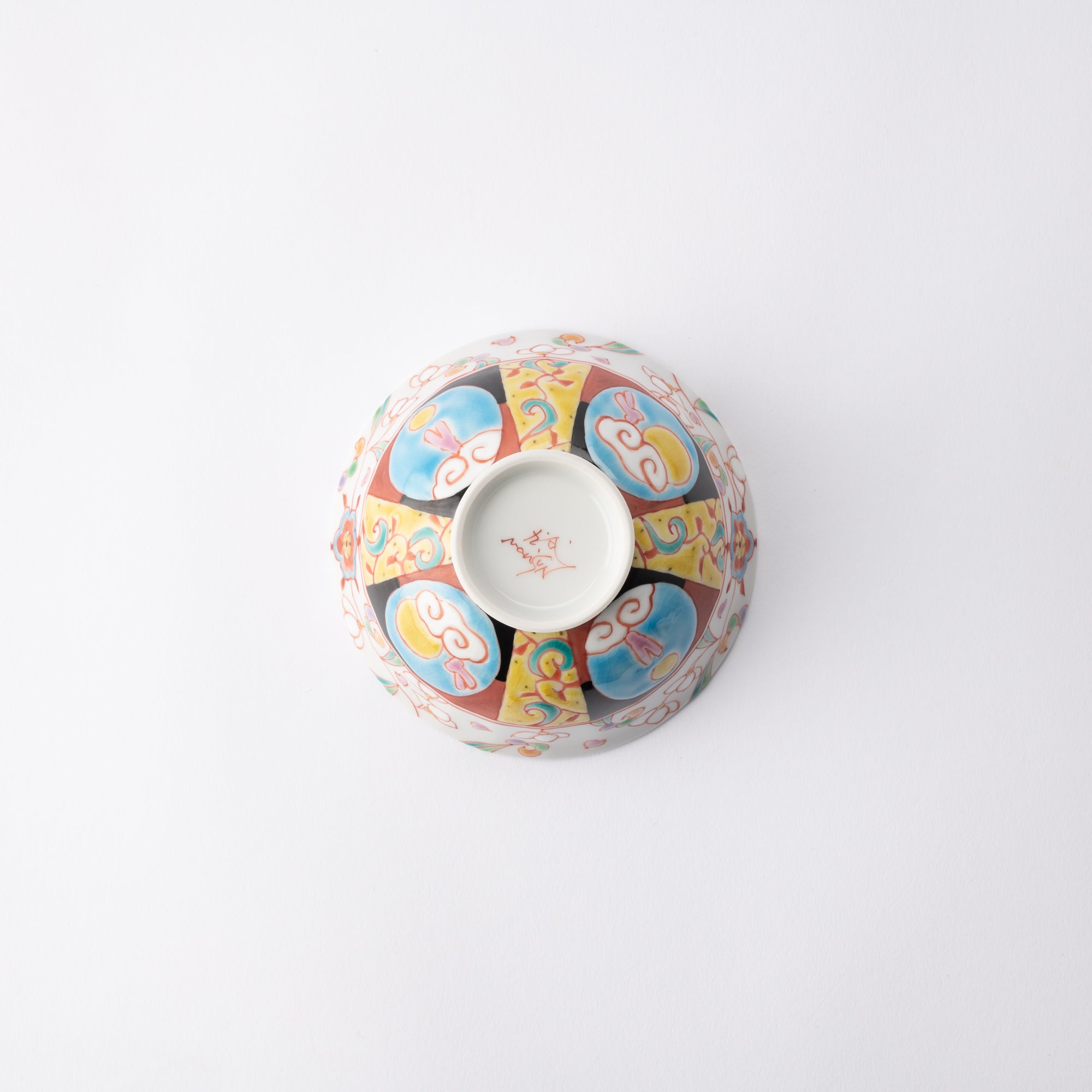
Moonlight Night Japanese Rice Bowl
Estimated Shipping Widget will be displayed here!
This rice bowl features a pattern designed with a moonlight night motif delicately painted by artisans of Ginshu Kiln, which is especially known as its romantic and playful pastel colored painting. If you take a closer look, there are rabbits hiding in the clouds.
The painted areas have a slightly raised texture, a characteristic of Kutani ware, which is traditionally hand-painted using Japanese coloring pigments and a brush.
With a diameter of 11 cm (4.3 in), it is a perfect bowl for serving rice, yogurt, ice cream.
In Japan, rice bowls are often used by each person choosing a pattern they like. This Ginshu Kiln rice bowl series also has various patterns, so please try collecting other bowls as well.
DETAILS
| Quantity | 1 |
| Size | D 11cm (4.25in) x H 5.5cm (2.67in) |
| Material | Porcelain |
| Microwave | Yes |
| Dishwasher | Yes |
Maker / Brand
Designed and painted by a father, mother, and daughter team, the works of Ginshu Kiln bring a creative new feel to Kutani ware design. Their gentle atmosphere and enchanting colors will take you to a dreamland of delicate artwork. Each detailed brushstroke expresses Ginshu Kiln's sincere wish for their customers to truly enjoy their tableware. The first generation kiln master, Bunkichi, is considered a master Kutani ware craftsperson.
Ginshu Kiln's traditional Kutani coloring and refined craftsmanship will add vividness and playfulness to your dining table.
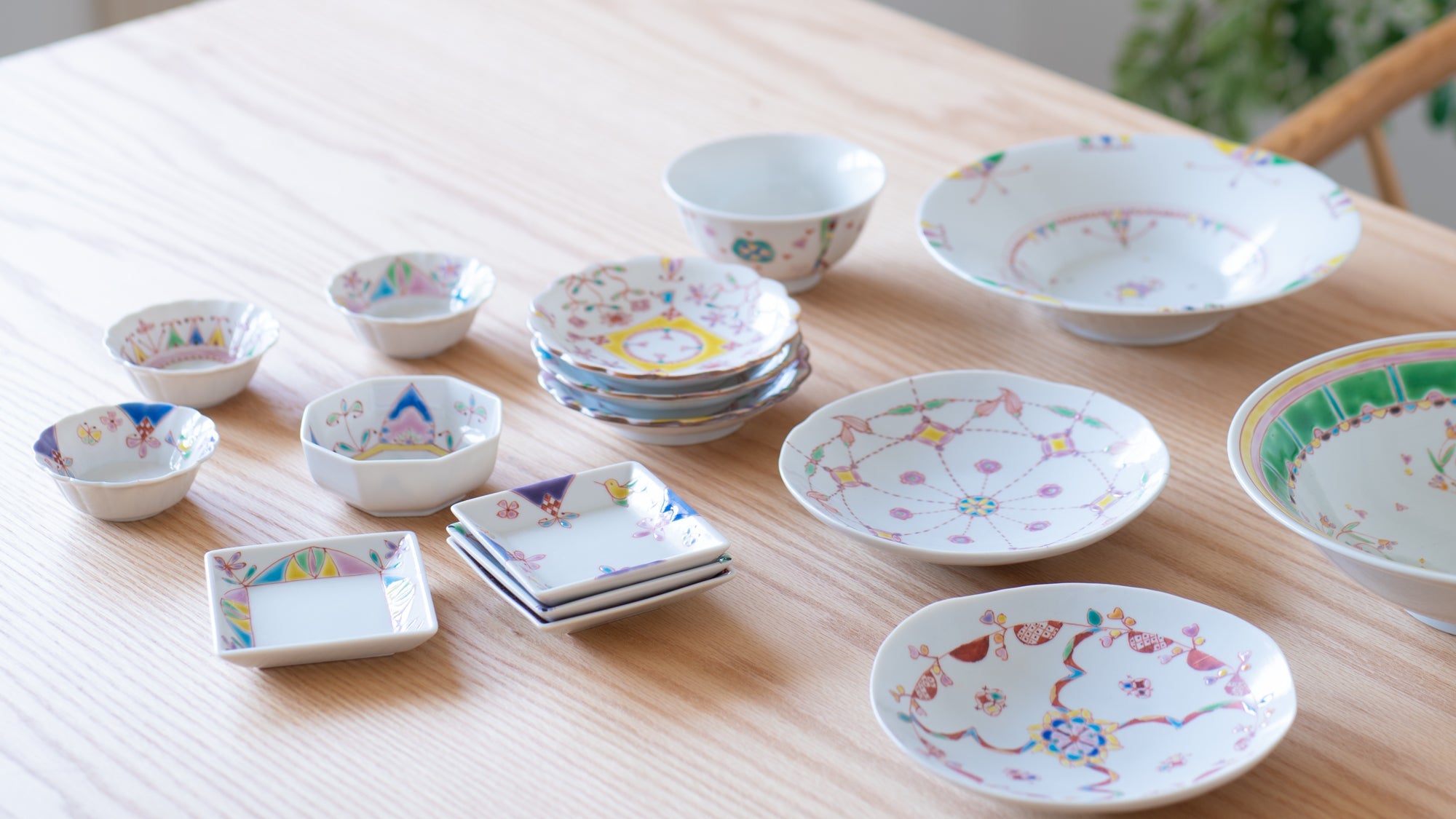
Crafts
Kutani ware is a pottery produced in the Kaga region of Ishikawa Prefecture, with a history spanning over 350 years. It is characterized by the heavy brilliance of the five colors of navy blue, red, purple, green, and yellow that are applied to the bold and daring lines. Its long history has evolved through the tireless efforts and enthusiasm of people who have sought innovation while maintaining tradition.
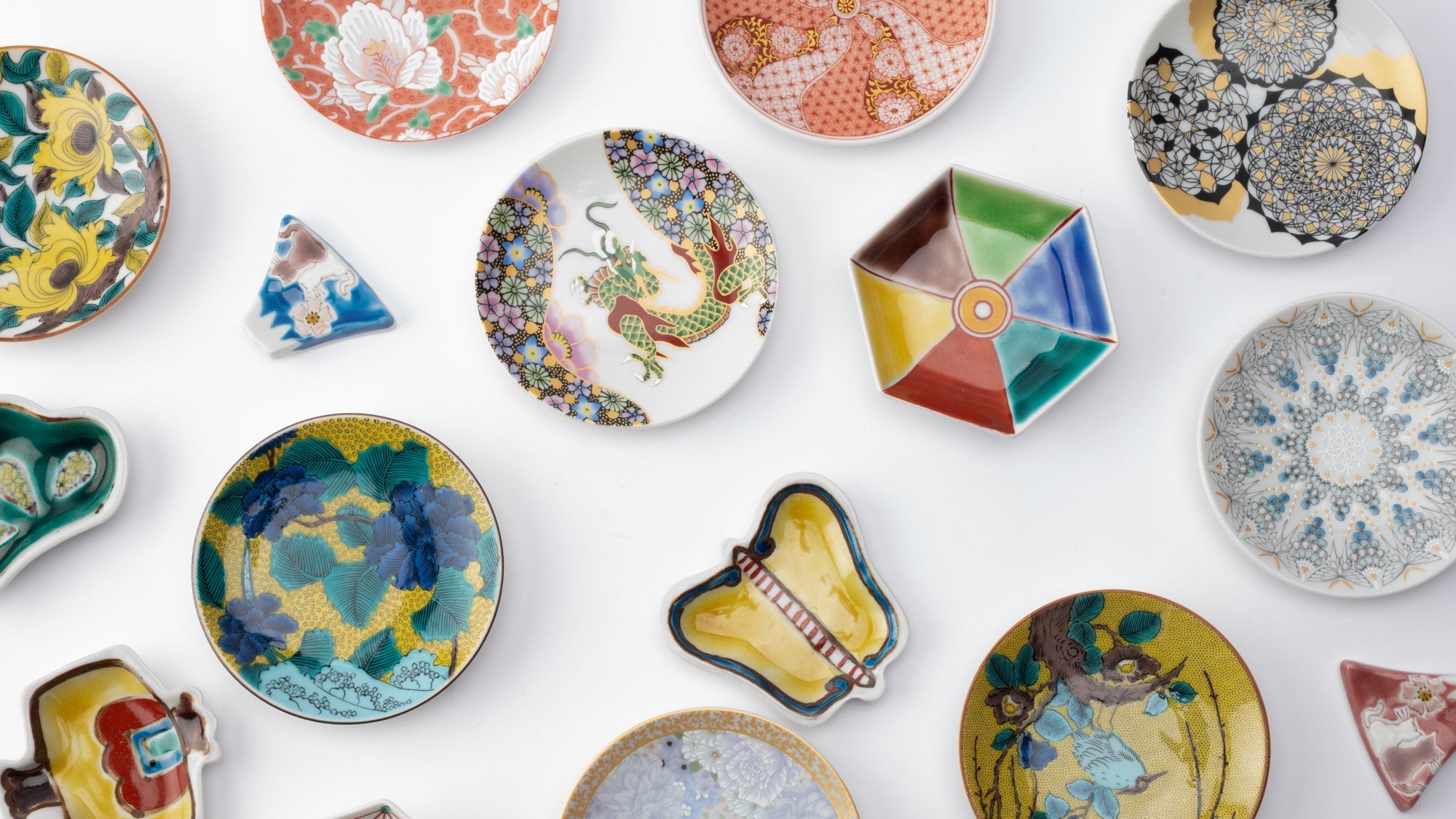
Choose options









Estimated Shipping Widget will be displayed here!
Rice Bowls
Rice bowls are indispensable tableware for the Japanese dining table. Since they are used so often for Japanese food, many people are particular about them. It is important to choose one that is not only beautiful to look at, but is also the right size for your hand and easy to hold.
We recommend that you get a dedicated rice bowl for each member of your family. It's also a good idea to have a few available for different occasions, in varying colors and patterns that match the season and table setting.
